
Carole Lombard 1926

Today’s main theme just has to be W’s ‘That Was Some Weird Shit’. Here’s the graph to go with it.
• Fed’s Williams Says Bank Lending Slowdown Doesn’t Worry Him Yet (YF)
A recent slowdown in bank lending has some observers concerned that the post-election pops in optimism are sending a false signal about the strength of the U.S. economy. To San Francisco Fed president John Williams, however, this decline is out of step with everything else credit markets are saying about the economy. “The big picture is: I don’t see any signs of a slowing either on the demand side or on the credit supply side,” Williams told Yahoo Finance on Wednesday. “Overall, the other indicators, everything we see, [says] economic conditions are good,” Williams added. “Confidence is good, and we’re not seeing any signs of bank lending standards changing fundamentally. So it’s hard to see anything, from my viewpoint, that [says] credit is less available.”
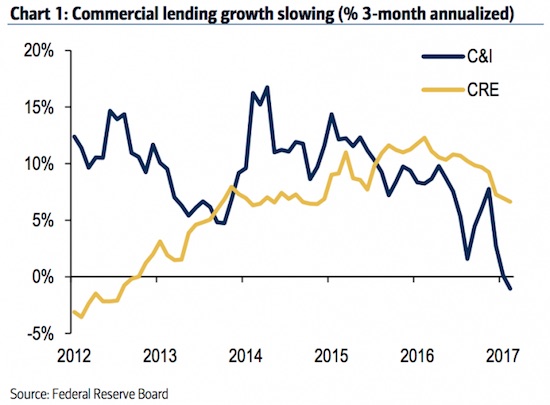
In recent months, the growth rate of commercial and industrial loans, as tracked by the Federal Reserve’s weekly H.8 report on assets and liability of U.S. banks, has been on the decline. This is viewed by many as a negative development in an economy where lending and borrowing activity serve as proxies for the economy’s overall health. But Williams also cautioned that lending data can reveal economic developments on a lag. For example, he noted to Yahoo Finance that in 2008 bank lending increased, which contradicted the notion that the financial markets were seizing up. Indeed, companies were unable to borrow by tapping the bond markets. However, the lending did increase because companies drew from existing lines of credit.
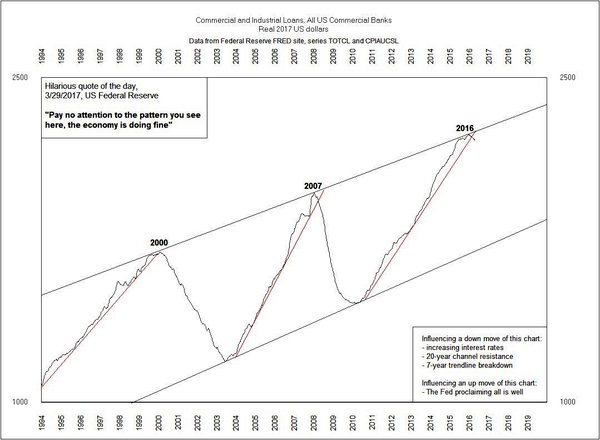
Right now, Williams noted that one story behind the drop in C&I loan growth going around is that oil and gas companies last year drew on lines of credit, boosting loan growth at the time. And thus the current decline in lending, which appears out of step with broader economic conditions, is occurring largely because of difficult year-over-year comparisons.

Retail demise exposes banks.
• Retailing in America: Game Theory in Reverse (DiMartinoBooth)
On March 21st, Sears Holding Corporation submitted a filing with its regulators that it has “substantial doubt” it can continue as a “going concern.” Don’t recall companies being charged with making their own death throes’ announcements from your Accounting coursework? You are correct. Meet the new and improved U.S. accounting rules that have just come into effect for public companies reporting annual periods that ended after December 15, 2016, Sears included. The change shifted the onus to disclose from a given company’s auditors to its management. It was telling that the Sears news fell on the very same day discount retailer Payless announced it could soon file for bankruptcy protection. That same day, the less ubiquitous Bebe female fashion chain said it too was ‘exploring strategic options,’ typically code for that same ill-fated Chapter in the court system.
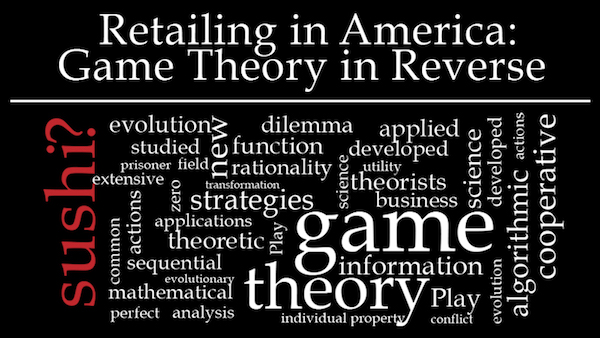
[..] At the opposite end of the denial spectrum sits Boston Fed President Eric Rosengren, who is and has been publicly worried about an entirely different sort of challenge facing the real estate market. It’s no secret that apartment prices are soaring. Over the past year, prices have risen 11%, leading the broad market. While that increase may seem benign in and of itself, consider how the sector has fared over the course of the recovery: prices have recouped an eye-watering 240% of their peak-to-trough losses. In sharp contrast, retail has performed the worst; it’s only recovered 96% of its losses. Rosengren is rightly worried that the “sharp” increase in apartment prices could catalyze financial instability. He went on to say that, “Because real estate holdings are widespread, and the monetary and macro-prudential tools for handling valuation concerns are somewhat limited, I believe we must acknowledge that the commercial real estate sector has the potential to amplify whatever problems may emerge when we at some point face an economic downturn.”
If you would indulge a translation: The bubble in commercial real estate (CRE) could trigger systemic risk, which of course, no central bank can contain. The ‘macro-prudential’ tools to which Rosengren refers include rules and caps on banks’ exposure to CRE. Odds are, however, that the horse has already fled the barn. Over the past five years, CRE lending has been running at roughly double economic growth, a dangerous dynamic. The result: banks’ exposure to CRE has reached record levels. Last year alone, bank holdings of CRE and multifamily mortgages rose nine and 12%, respectively. More worrisome yet is that the most concentrated cohort – those with more than 300% of their risk-based capital at risk – is banks with less than $50 billion in assets; most have assets south of $10 billion. How exactly will small banks confront a systemic risk conflagration? That pesky potential presumably is what’s robbing Rosengren of sleep at night. He might just remember that small German lenders called Landesbanks were where subprime bombs detonated unexpectedly way back when.

Anyone who can fog a mirror is back
• ‘Deep Subprime’ Auto Loans Are Surging (BBG)
About a third of the risky car loans that are bundled into bonds are considered “deep subprime,” a level that has surged since 2010 and is translating to higher delinquencies on the loans, according to Morgan Stanley. Consumers are falling behind on most subprime car loans, but deep subprime borrowers have deteriorated fastest, the analysts said. Sixty-day delinquencies for bonds backed by these loans have risen 3 percentage points since 2012, compared with just 0.89 percentage points on all other subprime auto securities, Morgan Stanley’s Vishwanath Tirupattur, James Egan and Jeen Ng said in a report dated March 24. “The securitization market has become more heavily weighted towards issuers that we would consider deep subprime,” the strategists wrote. “Auto loan fundamental performance, especially within ABS pools, continues to deteriorate.”
The percentage of subprime auto-loan securitizations considered deep subprime has risen to 32.5% from 5.1% since 2010, Morgan Stanley said. The researchers define deep subprime as lenders with consumer credit grades known as FICO scores below 550. The scale from Fair Isaac Corp. ranges from 300 to 850 and while there’s no firm definition of subprime, borrower scores below 600 are in general considered high credit risks. As Wall Street banks have found it tougher to profit under new regulatory regimes born out of the last subprime crisis, they’ve become more willing to underwrite riskier auto-loan asset-backed security sales. Investors, starved for returns with about $8 trillion of debt globally carrying negative yields, have in turn proven to be insatiable, further facilitating higher levels of risk in the market for the securities.

The casino’s open for business.
• Margin Debt Hit All-Time High in February (WSJ)
Margin debt climbed to a record high in February, a fresh sign of bullishness for flummoxed investors trying to navigate the political and economic crosscurrents driving markets. The amount investors borrowed against their brokerage accounts climbed to $528.2 billion in February, according to the most recent data available from the New York Stock Exchange, released Wednesday. That is up 2.9% from $513.3 billion in January, which had been the first margin debt record in nearly two years. With margin debt, investors pledge securities, typically stocks or bonds, to obtain a loan from their brokerage firms. The money doesn’t have to be used to buy more investments, though it often is. The gauge tends to climb—and pull back—along with broader stock market gauges, which have been rising to fresh records in the wake of November’s presidential election.
Rising levels of margin debt are generally considered to be a measure of investor confidence. Investors are more willing to take out debt against investments when shares are rising and they have more value in their portfolios to borrow against. But experts say a steep rise can indicate that investors are losing sight of market risks and betting that stocks can only go up. Margin debt has a history of peaking right before financial collapses like the ones in 2000 and 2008. When stocks move lower, investors who are buying with borrowed money often must pull out of the market, exacerbating the decline. Before January, the previous record high for margin debt was $505 billion in the spring of 2015. Margin debt then started falling, months ahead of a summer swoon that sent major indexes down more than 10%.
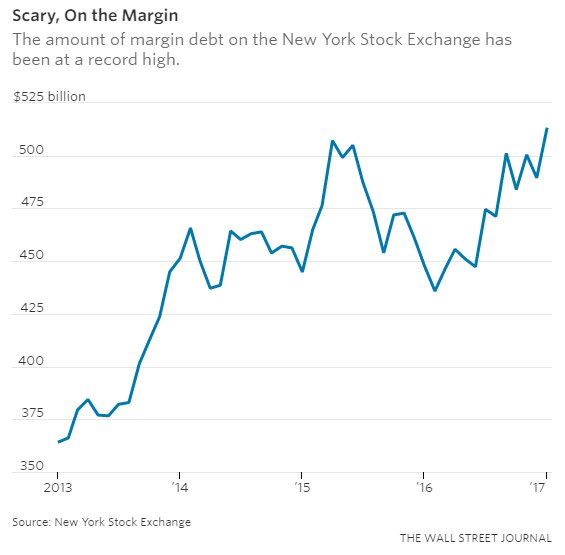

As demand falls.
• US Oil Export Surge Steals More OPEC Share (CNBC)
As OPEC tries to keep oil off the world market, U.S. oil producers are pouring more onto it. The U.S. last week sent more than 1 million barrels a day of crude out of the country, the third biggest export week ever, and double the average amount exported in 2016. It is also the third time this year that U.S. exports exceeded a million barrels a day, an industry record. “It should be somewhat supportive of [U.S. oil prices] in the short run, particularly if the exports keep up. But it obviously is a challenge for the global market and a renewed threat to OPEC and their designs of keeping prices up,” said John Kilduff of Again Capital While the U.S. exported oil, it also exported fuel last week — a steadily growing business. The U.S. sold 1.1 million barrels of diesel fuel, in line with the recent average, but 608,000 barrels a day of gasoline, up from less than 400,000 barrels a day a year ago.
Analyst say the jump in exports means U.S. producers are grabbing more share at the expense of OPEC and its partners, at a time when the cartel and other producers are considering whether to extend their deal to hold 1.8 million barrels of oil off the market. But the U.S. may also be seeing the early signs of a potential rebalancing of its own supply picture, and that could ultimately help clear a logjam of domestic oil barrels. “What we’re now seeing in the U.S. is refinery utilization increasing, as the maintenance season draws to a close. At the same time, there’s good demand for gasoline and diesel which is helping get inventories under control. Those product inventories are less than they were this time last year,” said Andrew Lipow, president of Lipow Oil Associates. U.S. refineries supplied 9.5 million barrels a day of gasoline last week, up from 9.2 million the week earlier. Refinery runs increased by 425,000 barrels a day.

Transparency International reports.
• Australia World’s Worst Money Laundering Property Market (TI)
The real estate market has long provided a way for individuals to secretly launder or invest stolen money and other illicitly gained funds… According to the Financial Action Task Force (FATF), real estate accounted for up to 30% of criminal assets confiscated worldwide between 2011 and 2013… In many such cases, property is purchased through anonymous shell companies or trusts without undergoing proper due diligence by the professionals involved in the deal. The ease with which such anonymous companies or trusts can acquire property and launder money is directly related to the insufficient rules and enforcement practices in attractive markets… This assessment identifies the following 10 main problems that have enabled corrupt individuals and other criminals to easily purchase luxurious properties anonymously and hide their stolen money in Australia, Canada, the UK and the US:
• Inadequate coverage of anti-money laundering provision
• Identification of the beneficial owners of legal entities, trusts and other legal arrangements is still not the norm
• Foreign companies have access to the real estate market with few requirements or checks
• Over-reliance on due diligence checks by financial institutions leads to cash transactions going unnoticed
• Insufficient rules on suspicious transaction reports and weak implementation
• Weak or no checks on politically exposed persons and their associates
• Limited control over professionals who can engage in real estate transactions: no “fit and proper” test
• Limited understanding of and action on money laundering risks in the sector
• Inconsistent supervision
• Lack of sanctionsAustralia has severe deficiencies under all 10 areas identified in the research and is therefore not in line with any of the commitments to tackle corruption and money laundering in real estate made in international forums. In Australia, real estate agents are not subject to the provisions of the Anti-Money Laundering and CounterTerrorism Financing Act 2006. Other professionals such as lawyers and accountants who may also play a role in the sector are not covered either. This means that properties can be bought and sold without any due diligence on the parties. Currently there are no requirements for real estate agents or any professional involved in real estate deals to submit STRs, even if they suspect illegal activity is taking place, and there are no requirements or rules for verifying whether customers are PEPs or their close associates…
In Australia, Canada and the US, the current anti-money laundering framework shows a tendency to rely on financial institutions to conduct the necessary background checks on real estate transactions… there are no checks on cash transactions. In Australia, 70% of Chinese buyers pay in cash and they represent the largest proportion of foreign purchases in the country.

How this does not scare very single person out of their socks, I can’t imagine.
• Sydney, Melbourne House Price Gains Accelerate (AFR)
House price growth accelerated further in March, with gains in Sydney and Melbourne pushing higher than previous cyclical peaks, preliminary CoreLogic figures show. Data for the first 28 days of the month shows Sydney prices have risen 19% over the past year while Melbourne has posted a 16% gain, the company said on Thursday. The combined capital city average of 1.4% – the same pace of growth as February – suggests that the strengthening in the two largest cities offsets further weakness in other markets. “The early results come after a strong rebound in housing market conditions through the latter half of 2016 and into 2017,” CoreLogic head of research Asia Pacific Tim Lawless said. “The strong capital gain results are further evidenced by a continuation in low stock levels, high auction clearance rates and strong investment demand.”
In other data that will underpin property prices, official figures released on Thursday show Sydney’s population hit five million, and Melbourne is the country’s fastest-growing capital. Some caution is needed. A methodology change by CoreLogic last year exaggerated price growth in Sydney and Melbourne while also exacerbating the declines in the falling Perth market. CoreLogic has not yet revised the figures to account for the methodology and distortions will only drop out of the year-on-year comparison in June. It’s clear the market is buoyant, however. Even with lenders tightening loan conditions to investor borrowers, they are increasing discounts to owner owner occupiers to protect market share, Deloitte’s annual Australian mortgage report said on Thursday.

Nice bubble you got there. Wouldn’t want anything to happen to it, would you?
• Auckland Housing Market Losing All Capital Gains Of The Last 12 Months (INZ)
The Auckland housing market is on the verge of having all of the capital gains it made in the last 12 months wiped out. Prices of Auckland properties have fallen so much in the last few months that median prices are within a hair’s breadth of going into negative territory on an annual basis. They may already be there. In February the average price of Auckland homes sold by Harcourts, the country’s largest real estate agency, was $934,428, down 1.1% compared to where it was in February last year. While Harcourts’ average prices can be a bit choppy on a month by month basis, the figures do not appear to be an aberration. According to the Real Estate Institute of New Zealand, Auckland’s median selling price peaked at $868,000 in October last year and has declined every month since. In February it hit $800,000, down 7.8% from October’s peak.
But just as significantly, Auckland’s median price in March last year was $820,000. So even if the median price for March this year doesn’t fall any further from where it was in February, or if it increases by anything less than $20,000, Auckland’s median price will have declined to the point where it will be below where it was 12 months previously. Then it’s goodbye capital gains. The interesting thing about those numbers is that the downward trend they show is occurring at a time when Auckland’s migration-driven population growth is increasing at record levels and construction of new housing continues to fall miserably below the numbers that are required, exacerbating the region’s growing housing shortage. How can this be? As you might expect, the market is being influenced by forces converging from several different directions.
One of the biggest changes to affect the Auckland market over the last few months has been the relative absence of local ethnic Chinese buyers. It would be hard to underestimate the impact they were having on Auckland’s residential property market up until about the end of the third quarter of last year. They dominated some of what are often called the “big room” auctions where several dozen properties could be auctioned in a single day, and it wasn’t uncommon for them to account for around 70% of sales. Often they were competing amongst themselves for properties and their bidding could be fierce. Sometimes it seemed as if the prices they were prepared to pay knew no limits. Then late last year, just as the market geared up for the summer selling season, the Chinese tide went out.
Auckland now has a significant population of Chinese people, so there will always be some who are actively buying or selling properties. But the numbers are well down on where they were a year ago. Auctions that were packed with Chinese buyers this time last year are now much quieter and Chinese faces are often more notable by their absence rather than their presence. When they are buying, they are more likely to be buying a home for themselves or perhaps their children than a pure investment property, and their bidding has been far more cautious than it was just a few months ago. Often they will bid on a property only to let it be passed in, figuring that they may not face much competition from other buyers in post-auction negotiations. With the odd exception, the days of the bidding frenzy are over.

All for it.
• House Panel Passes Bill To Audit The Fed (MW)
A House panel on Tuesday approved legislation that would let a government watchdog audit the Federal Reserve’s monetary policy decisions, a move bitterly opposed by the central bank. The House Committee on oversight and government reform passed the measure by voice vote after roughly 30 minutes of debate. The bill was the brainchild of Ron Paul, the former House Republican and libertarian presidential candidate and sharp critic of the U.S. monetary policy. Versions of the bill have twice passed the House by wide margins but then stalled due to lack of support from Democrats in the Senate and the Obama administration. Analysts said the measure has a better chance to become law now that Republicans control both houses of Congress and the White House. Paul’s son, Rand, the Republican senator from Kentucky, has introduced a similar measure in the Senate.
Democrats in the committee were firmly against the bill. “This bill would open the floodgates to political interference in monetary-policy making,” said Del. Eleanor Holmes Norton, a Democrat from the District of Columbia. Rep. Carolyn Maloney, a Democrat from New York, said the measure would lead to higher interest rates because it would undermine the market’s confidence in the independence of the central bank. Republicans said the measure was needed to rein in the Fed. “It is ironic that the arsonists that caused the financial collapse are now being given credit…for putting out the fire. Almost every macroeconomist concedes in retrospect that [the Fed’s] extended period of easy money led to the financial crisis,” said Rep. Thomas Massie, a Republican from Kentucky.

What good could it do to go to the Ninth Circuit Court at this point?
• Hawaii Judge Places Indefinite Hold On Trump Travel Ban (BBC)
A US federal judge in Hawaii has indefinitely extended the suspension of President Trump’s new travel ban. Judge Derrick Watson’s ruling means Mr Trump will be barred from enforcing the ban on six mostly Muslim nations while it is contested in court. In a lawsuit, the US state says the ban would harm tourism and the ability to recruit foreign students and workers. President Trump says his revised travel ban seeks to prevent terrorists from entering the United States. Judge Watson made the ruling late on Wednesday after hearing arguments from attorneys for the state of Hawaii and the US Department of Justice. The judge turned his earlier temporary restraining order into a preliminary injunction that would have a more lasting effect.
President Trump’s executive order on 6 March would have placed a 90-day ban on people from Iran, Libya, Somalia, Sudan and Yemen and a 120-day ban on refugees. An earlier version of the order, issued in late January, sparked confusion and protests, and was blocked by a judge in Seattle. Other courts across the US have issued different rulings on Mr Trump’s revised ban, with a judge in Maryland halting a part of the ban earlier this month. Mr Trump has complained of “unprecedented judicial overreach”, pledging to take the case “as far as it needs to go”. An appeal against the Hawaii decision would be expected to go next to the Ninth Circuit Court of Appeals – the same court which in February said it would not block a ruling by a Seattle court to halt the original travel ban.

Because working together is so last century?!
• Paul Ryan Opposes Trump Working With Democrats On Healthcare (R.)
U.S. House of Representatives Speaker Paul Ryan, the top Republican in Congress, said he does not want President Donald Trump to work with Democrats on new legislation for revamping the country’s health insurance system, commonly called Obamacare. In an interview with “CBS This Morning” that will air on Thursday, Ryan said he fears the Republican Party, which failed last week to come together and agree on a healthcare overhaul, is pushing the president to the other side of the aisle so he can make good on campaign promises to redo Obamacare. “I don’t want that to happen,” Ryan said, referring to Trump’s offer to work with Democrats. Carrying out those reforms with Democrats is “hardly a conservative thing,” Ryan said, according to interview excerpts released on Wednesday.
“I don’t want government running health care. The government shouldn’t tell you what you must do with your life, with your healthcare,” he said. On Tuesday, Trump told senators attending a White House reception that he expected lawmakers to reach a deal “very quickly” on healthcare, but he did not offer specifics. “I think it’s going to happen because we’ve all been promising – Democrat, Republican – we’ve all been promising that to the American people,” he said. Trump said after the failure of the Republican plan last week that Democrats, none of whom supported the bill, would be willing to negotiate new healthcare legislation because Obamacare is destined to “explode.”

Who’s left to represent actual Americans?
• Democrats Against Single Payer (Jacobin)
Virginia Democratic senator Chuck Robb, one of the DLC’s founders, warned in 1989 that “policies forged in the economic crisis of the 1930s and the social and cultural schisms of the 1960s” were irrelevant to most Americans. Two years later, Bill Clinton’s issue director Bruce Reed, who doubled as policy director for the DLC, made sure to distance Clinton from single payer. The issue flared up again during the 2008 Democratic primary fight, where both Obama and Hillary Clinton tried hedging their bets. Clinton put forward a plan that was basically Obamacare while insisting that “Medicare for All” could still be on the cards under the right circumstances. Meanwhile Obama repeatedly flip-flopped, at one point telling an audience that “the Canadian model won’t work in the United States” and that “we’ve got to develop a uniquely American approach,” and nine days later hinting to a different audience that over time single payer may be on the table.
DLC leaders felt reassured however, telling the New York Times they were “pleased that none of the Democratic candidates supports a single-payer health-care system.” So Democrats’ attempts to quell their base’s clamoring for a comprehensive, public health-care system isn’t new. What is new is the open, public disparagement of such a goal — not just by Democratic leaders, but by leading liberal commentators, too. Ironically, this appears largely to have been due to the Sanders campaign — or rather, the challenge it posed to Hillary Clinton’s previously wide-open road to the White House. Needing to differentiate herself from Sanders’s unabashed progressivism, and to dampen popular enthusiasm for his message, Clinton began attacking his policies, despite her historic sympathy toward single payer.
Sanders’s proposals were “ideas that sound good on paper but will never make it in real life,” she told crowds; for good measure, she insisted that single-payer health care “will never, ever come to pass.” Two years earlier, she explained her opposition to the policy on the basis that “we don’t have a one size fits all; our country is quite diverse.” In January 2016, she warned breathlessly that Sanders’s plan would “end all the kinds of health care we know” and claimed it would “send health insurance to the states,” while her daughter warned that it would “dismantle Obamacare” and “strip millions and millions and millions of people off their health insurance.”
As late as October, Clinton’s team was still trying to distance herself from Trump’s accusation that she — heaven forbid! — “wants to go to a single-payer plan,” with her spokesman directing Politifact to an earlier fact-check confirming her lack of support for the policy. (Lest we mistake this for mere expediency, we can rest assured that at least some of the Clinton camp really felt this way: campaign manager John Podesta declared in an email to ThinkProgress editor-in-chief Judd Legum that Sanders’s “actual proposal sucks, but we live in a leftie alternative universe.”)

Jim Quinn’s series on the similarities between Isaac Asimov’s Foundation Trilogy and Strauss & Howe’s Fourth Turning.
• American Empire Crumbling (Quinn)
You can hear the creaking as the winds of this Fourth Turning winter howl through the branches of this dying empire. Trump may have forced the Deep State Second Foundation to reveal itself as they seek to destroy him, but the relentless decline of the American Empire continues unabated. Tinkering around the edges of a healthcare system designed to benefit mega-corporations and the Deep State will do nothing to reverse or even delay the decline. Slowing the growth of government when the national debt is already $20 trillion and headed to $30 trillion within the next decade won’t cure the rot in our tree trunk. Completely ignoring the $200 trillion of unfunded welfare state liabilities helps accelerate the inevitable collapse of this empire. Cutting taxes while expanding the war making machine known as the military industrial complex does nothing to reverse what is already in motion.
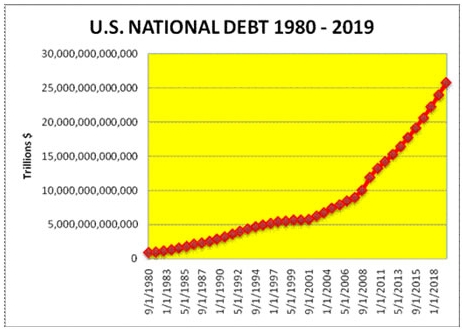
In addition to the absolutely quantifiable reasons why the American Empire will collapse, there are demographic, cultural, and societal trends which will contribute dramatically to the fall. The rapidly aging populace, with 10,000 Americans per day turning 65 years old, is the driving force towards national bankruptcy, as this inexorable demographic tsunami sweeps over the fraying fabric of welfare state promises. The onslaught of illegal immigrants and purposeful execution of a plan by the effete liberal elite to weaken our common American culture through the insertion of Muslim refugees into our communities, is undermining the shared values which built the country. The immigrants who built this country assimilated, learned the language, worked hard, and adopted our common culture. The hordes invading America at this time hate our values and refuse to assimilate. This Soros funded effort to create diversity havoc throughout the world is part of the globalization one world order plan.
As Europe disintegrates under the unrelenting wave of violent refugees creating upheaval, chaos, and spreading religious zealotry through viciousness, the next target is the mighty American Empire. Fighting in the streets between the normal law abiding Trump supporters and the Soros funded, draped in black, flag burning, social justice warrior criminals has begun. Widespread societal strife is just around the corner. When the next financial crisis, created by the Deep State to further their plans, destroys the remaining wealth of the barely surviving middle class, all hell will break loose in the streets. The 86% of the country occupied by red state, gun owning, Trump supporters will openly go to war against the condescending, left wing, violence provoking blue state liberals. Blood will be spilled in copious amounts. It always does during Fourth Turnings.
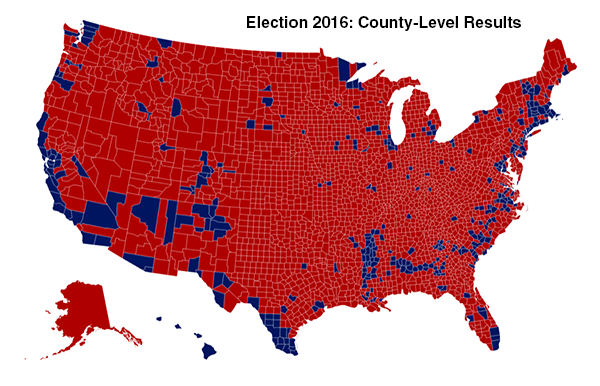

It cannot survive, period.
• The EU Cannot Survive If It Sticks To Business As Usual (Varoufakis)
Angela Merkel, the German Chancellor, had for years opposed the idea of a Europe that proceeds at different speeds – allowing some countries to be less integrated than others, due to their domestic political situation. But now – after the colossal economic mismanagement of the euro crisis has weakened the EU’s legitimacy, given Eurosceptics a major impetus, and caused the EU to shift to an advanced stage of disintegration – Mrs Merkel and her fellow EU leaders seem to think that a multi-speed Europe is essential to keeping the bloc together. At the weekend, as EU leaders gathered to celebrate the 60th anniversary of the Treaty of Rome, leaders of the remaining 27 member states signed the Rome Declaration, which says that they will “act together, at different paces and intensity where necessary, while moving in the same direction, as we have done in the past.”
The failure to keep the EU together along a single path toward common values, a common market and a common currency will come to be embraced and rebranded as a new start, leading to a Europe in which a coalition of the willing will proceed with the original ambition while the rest form outer circles, connected to the inner core by unspecified bonds. In principle, such a manifold EU will allow for the East’s self-proclaimed illiberal democracies to remain in the single market, refusing to relocate a single refugee or to adhere to standards of press freedom and judicial independence that other European countries consider essential. Countries like Austria will be able to put up electrified fences around their borders. It could even leave the door open for the UK to return as part of one of Europe’s outer circles. Whether one approves of this vision or not, the fact is that its chances depend on a major prerequisite: a consolidated, stable eurozone.
One only needs to state this to recognize the second paradox of our post-Brexit reality: In its current state, the eurozone cannot provide the stability that the EU – and Europe more broadly – needs to survive. The refusal to deal rationally with the bankruptcy of the Greek state is a useful litmus test for the European establishment’s capacity to stabilize the eurozone. As it stands, the prospects for a stabilized eurozone do not look good. Business as usual – the establishment’s favored option – could soon produce a major Italian crisis that the eurozone cannot survive. The only alternative under discussion is a eurozone federation-light, with a tiny common budget that Berlin will agree to in exchange for direct control of French, Italian and Spanish national budgets. Even if this were to happen, which is doubtful given the political climate, it will be too little, too late to stabilize the eurozone.

“Professor Jeremy Baumberg, director of the NanoPhotonic Centres at Cambridge University, was distinctly unimpressed. “It seems to me an extremely poorly written paper, conflating many ideas in a rather unrigorous mishmash,” he said.”
• Capitalism Inevitably Creates A ‘Sad’ Unfair World – Physicist (Ind.)
Capitalism is inherently unfair and will produce a world full of ‘sad’ and disgusting inequalities, but Communism is also “doomed to fail”, a leading scientist claims to have proved using the laws of physics. Professor Adrian Bejan told The Independent he was so excited by the “huge” implications of his theory that he kept having to pinch himself. A former member of the Romanian national basketball team, he is now an expert in thermodynamics and fluid mechanics at Duke University in the US, having written 30 books and more than 600 scientific papers. He now claims to have shown that physics can essentially explain economics. Inequality has been seen as a factor in the election of Donald Trump as US President and in the UK referendum vote in favour of Brexit.According to Oxfam, the richest eight men own the same wealth as the poorest 50% of the world’s population.
Professor Bejan said it was possible to explain how such inequality can develop by demonstrating that wealth moves around in a society like water in a river basin using the laws of physics. In a natural environment, water flows from small tributaries into larger and larger streams. And, according to Professor Bejan’s theory, the same is true of money. So, in a free market system, wealth will naturally flow from the poorest in the small tributaries to the richest in the wide rivers. Using this analogy, Communism is comparable to an attempt to restrict the flow of water to a network of equally sized concrete channels, which Professor Bejan said would inevitably be overcome by the forces of nature. But, just as humans do sometimes harness rivers to produce energy or divert them around cities, it is possible to alter the flow of money in society, he added.
And this is exactly what is being done by liberal democracies around the world with measures such as free education and healthcare, anti-trust regulations designed to prevent large corporations abusing their power, and the rule of law. “I want to see less inequality in the distribution of wealth. I get not just sad, but disgusted by it,” Professor Bejan said.

Getting more popular by the day.
• ‘That Was Some Weird Shit’ (NYMag)
The inauguration of Donald Trump was a surreal experience for pretty much everyone who witnessed it, whether or not they were at the event and regardless of who they supported in the election. On the dais, the stoic presence of Hillary Clinton – whom candidate Trump had said he would send to prison if he took office – underlined the strangeness of the moment. George W. Bush, also savaged by Trump during the campaign, was there too. He gave the same reason for attending that Bill and Hillary Clinton did: to honor the peaceful transfer of power. Bush’s endearing struggle with his poncho at the event quickly became a meme, prompting many Democrats on social media to admit that they already pined for the relative normalcy of his administration. Following Trump’s short and dire speech, Bush departed the scene and never offered public comment on the ceremony. But, according to three people who were present, Bush gave a brief assessment of Trump’s inaugural after leaving the dais: “That was some weird shit.” All three heard him say it.

On and on and on.
• 146 Feared Dead In Mediterranean, Boy The Sole Survivor (R.)
Dozens of people are feared to have drowned after a rubber boat carrying migrants and refugees from Libya sank in the Mediterranean. The sole survivor – a 16-year-old Gambian boy – told rescuers that 146 other people were on board when the boat sank. A Spanish frigate, the Canarias, found the boy hanging on to a piece of debris in the sea on Tuesday. He was transferred to an Italian Coast Guard ship and brought to the Sicilian island of Lampedusa early on Wednesday. “He was very tired when they found him. He’s resting now, so we’ll have more details later,” said the International Organisation for Migration (IOM) spokesman Flavio Di Giacomo in Rome, after speaking to staff in Lampedusa.
“The boy said they left Sabratha, Libya, a couple of days ago on a rubber boat with 147 sub-Saharan Africans on board, including five children and some pregnant women,” Di Giacomo said. In the past two days, rescuers have picked up more than 1,100 migrants at sea and recovered one body, Italy’s Coast Guard said. The Coast Guard did not comment on the latest shipwreck. So far this year nearly 600 migrants have died trying to reach Italy from North Africa, IOM estimates, after 4,600 deaths last year. Migrant arrivals to Italy are up more than 50% this year on the same period of last year. Early on Wednesday the Golfo Azzurro, a humanitarian vessel, rescued about 400 migrants – mainly from Morocco, Algeria, Libya, Gambia and Bangladesh – including 16 women and two children.









Home › Forums › Debt Rattle March 30 2017